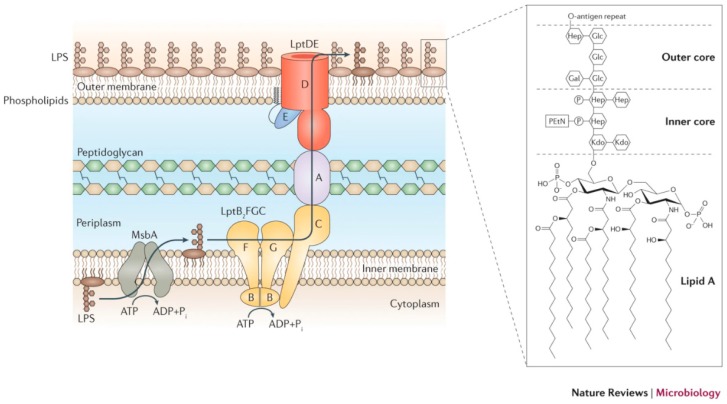Figure 1.
Lipopolysaccharide (LPS) transport pathway in Escherichia coli. LPS is synthesized on the cytoplasmic side of the inner membrane (IM) and flipped to the periplasmic side by the ATP-binding cassette (ABC) transporter MsbA. LPS is then transported to the cell surface by the LPS transport (Lpt) pathway. This pathway consists of seven essential proteins, LptA, LptB, LptC, LptD, LptE, LptF, and LptG. LPS is extracted from the IM in an ATP-dependent manner by the ABC transporter LptB2FG and transferred to LptC, which forms a complex with LptB2FG. LptC consists of a single membrane-spanning domain and a large periplasmic domain, which forms a periplasmic bridge with the soluble protein LptA and the amino-terminal region of LptD. LPS transverses the aqueous periplasmic space through this protein bridge and reaches the cell surface with the aid of the carboxy-terminal domain of LptD, which forms a β-barrel structure that is plugged by the outer membrane (OM) lipoprotein LptE. LPS is composed of lipid A, the inner and outer core oligosaccharides, and the O antigen, which is highly variable and absent in Escherichia coli K-12. The letters (A–G) in the figure correspond to the respective Lpt protein in the transport pathway. EtN, ethanolamine; Gal, d-galactose; Glc, d-glucose; Hep, l-glycero-d-manno-heptose; Kdo, 3-deoxy-d-manno-octulosonic acid; P, phosphate; Pi, inorganic phosphate. (Reproduced with permission from reference [2]).

